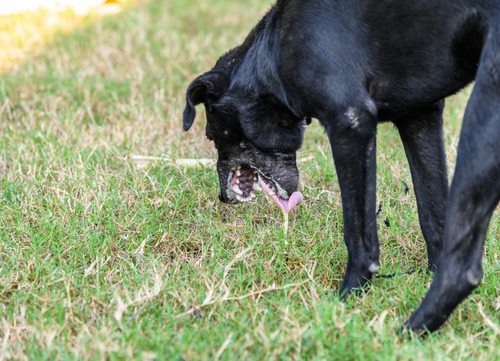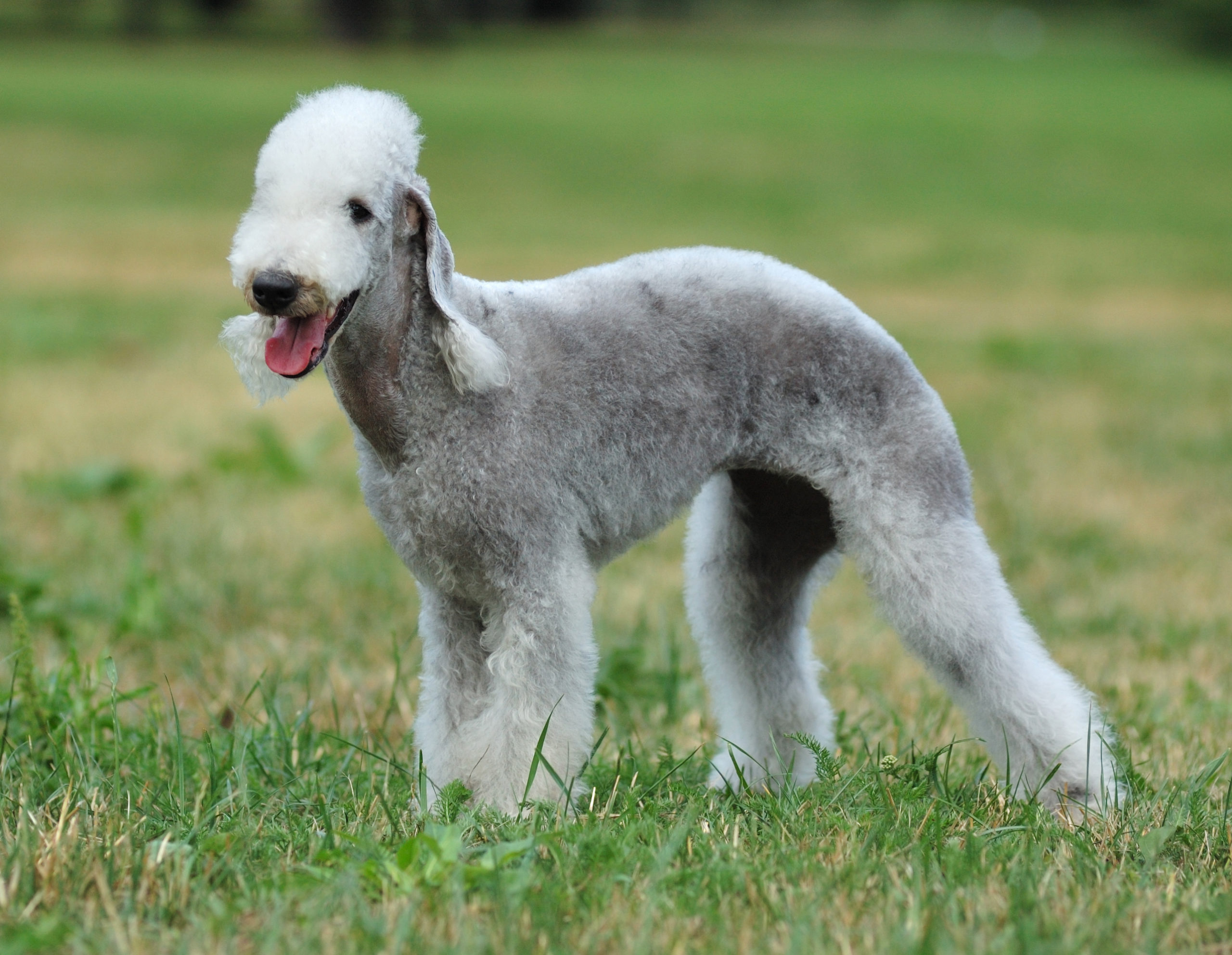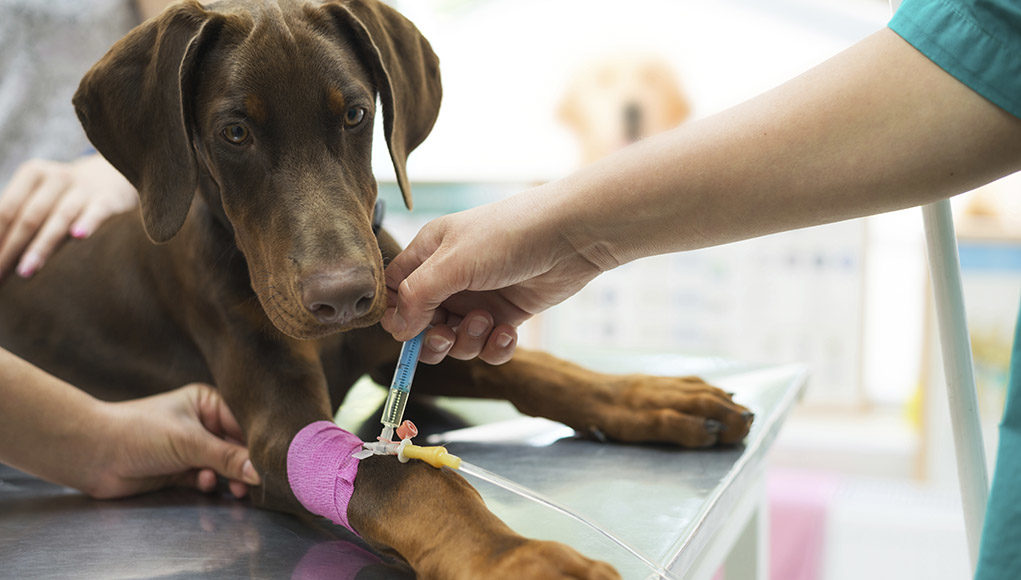Table of Contents
- What is Copper Poisoning in Dogs?
- Three Types of Primary Copper Liver Diseases
- Symptoms of Copper Poisoning
- Causes of Copper Poisoning in Dogs
- Dog Breeds that are prone to Copper Toxicosis
- Copper Poisoning in Dogs Diagnosis
- Treatment of Copper Poisoning in Dogs
- Recovery of Copper Poisoning in Dogs
- But I thought Copper and Other Minerals were Good for Dogs?
- Low Copper Dog Food
- Commonly Asked Questions About Copper Poisoning in Animals
- Copper Poisoning In Dogs Final Thoughts
“I thought copper was an essential nutrient for dogs?” Well, you're not wrong. But if copper is taken in excessive amounts, it can lead to copper poisoning in dogs.
Large amounts of copper can lead to a liver disease called Copper-Storage Hepatopathy or copper toxicity in dogs. A few symptoms of copper poisoning in dogs you should look out for are vomiting, loss of appetite, lethargy, anemia, and abdominal pain.
Copper is a nutrient that many pet owners usually ignore until it is associated with an illness. But on the other hand, copper is still an essential nutrient.
Copper is an essential element for animals like dogs. It is needed for their body, bone, and wool growth. It is also required for pigmentation, healthy nerve fibers, and white blood cell function.
In addition, copper also acts as an antioxidant and helps with the absorption of iron, making it an essential piece for red blood cell functions.

What is Copper Poisoning in Dogs?
Copper poisoning is a critical emergency that can cause unrepairable damage to the dog's liver. If not treated, this type of poisoning can be fatal.
This brings us to Copper-Storage Hepatopathy. Copper-Storage Hepatopathy or Copper Toxicosis (CT) is a liver disease when a dog consumes too much copper. It is an abnormal buildup of copper in the dog's liver that leads to damage to the liver.
Copper can only be removed from a dog's body through bile. Copper poisoning is considered to be a bile flow disorder by experts. That's why certain breeds are prone to this.
In addition, Bedlington Terriers have inherited sensitivity to copper making them probably one of the most common breeds that experience copper poisoning. Below, we'll also discuss other breeds prone to copper poisoning.
Meanwhile, Copper-Storage Hepatopathy can be secondary to a primary disease or an abnormal copper metabolism condition that was inherited. In addition, female dogs are more prone to get this condition than male dogs.
Three Types of Primary Copper Liver Diseases
Acute
In acute copper poisoning, the dog exhibits symptoms right away. Usually caused by an accidental overdose of copper salt (parasite medication).
Chronic
On the other hand, Chronic Copper Poisoning is progressive. Usually caused by eating plants or diets that are high in copper. This can cause hepatitis and significant gastrointestinal problems.
Subclinical Disease
In this condition, the disease is present in the organ or body of the dog. But it is not detectable by abnormal signs or changes in the dog.
This means that the dog is not showing any symptoms of the disease.

Symptoms of Copper Poisoning
Acute Symptoms
- Vomiting
- Depression
- Lethargy
- Loss of Appetite (Anorexia)
- Blood in the urine
- Anemia
- Abdominal Pain
- Dehydration
Chronic Symptoms
- Vomiting
- Lethargy
- Depression
- Diarrhea
- Loss of Appetite (Anorexia)
- Weight loss
- Excessive thirst
- Disorientation
- Yellowish discoloration of the skin
- Nervous System dysfunction or failure
Causes of Copper Poisoning in Dogs
Dogs, at any age, can be affected by copper storage hepatopathy or copper poisoning. But the main factor in this condition is their genetics.
For instance, Bedlington Terriers lacks a specific gene coding for a liver protein that helps in the elimination of copper in the bile. But a genetic cause is just a suspicion, and it is still unconfirmed.
On the other hand, copper poisoning can also be caused by eating Mediterranean clover, pennies, and overdosing on deworming medications.
Dog Breeds that are prone to Copper Toxicosis
- Doberman Pinschers
- Bedlington Terriers
- Labrador Retrievers
- Skye Terriers
- West Highland White Terriers
- American Cocker Spaniels

Copper Poisoning in Dogs Diagnosis
Your vet will conduct laboratory tests, including blood tests, urinalysis, and physical evaluations, for example, vital signs, reflexes, height, and weight.
Blood tests will help the vet determine the complete blood count, liver enzyme levels, liver glucose levels, and blood gases.
On the other hand, urinalysis is conducted to check for copper and free hemoglobin levels in the urine.
They will need a complete history of your dog's health including the symptoms and other possible incidents that might have triggered the condition.
Your dog's health history can provide clues on whether the disease is of primary or secondary origin.
In addition, the most effective way to get the diagnosis is by getting a tissue sample from the liver for biopsy, and an ultrasound to the abdominal area to know the condition of the liver.
Treatment of Copper Poisoning in Dogs
Treatment will depend on how serious the dog's symptoms show and what type of disease they are experiencing (acute or chronic).
If your dog exhibits severe symptoms or signs of liver failure, the vet is more likely to admit them for IV Fluid, oxygen therapy, and antibiotics.
On the other hand, changing your dog's diet with foods low in copper can also be effective. Switching to a homemade dog food diet is not a bad idea in this situation since you'll have full authority over what your dog is eating.
Long-term treatment of 3 mg of zinc per day can help improve their liver functions. In addition, giving them vitamin E can also be beneficial to reduce the damage done to the dog's liver.
Meanwhile, if you're planning to adopt or get a dog like Bedlington terrier, you should ask for the dog's parents.
Ask if they have been tested for the gene that causes liver diseases like Copper-Storage Hepatopathy.
Buying a Bedlington puppy from a breeder whose dogs are free from harmful or problematic genes can help lessen the chances of getting a dog that will develop copper storage hepatopathy.
Recovery of Copper Poisoning in Dogs
If your vet says that your dog is now ready to go home, you are now responsible for monitoring their health. Severe cases should continue intense treatment daily for several days.
Additionally, blood tests will be required every four to six months. Your dog will now have to be monitored for its entire life to check its zinc and copper levels in the blood.
Your vet will also ask you to monitor your dog's weight and in occasional cases, a liver biopsy will need to be repeated.
But I thought Copper and Other Minerals were Good for Dogs?
Yes! Minerals are still great for the body but at certain levels. Some minerals, such as copper, can become toxic in large amounts.
With the right amount of copper, your dog can get many health benefits. A few examples are:
- Healthy and beautiful coat color
- Copper helps in the formation of bones, collagen, and connective tissues
- Helps with creating a membrane that protects all the nerves in the body called myelin.
- Lessens the chances of anemia due to helping the body metabolize iron
Signs of Copper Deficiency in Dogs
Copper deficiencies are not rare, even though kibble companies must have copper in their dog foods. Recent studies suggest that puppies that were fed with low copper diets have a higher chance of having:
- Change in hair color
- Anemia
- Bone Disorders
- Low sperm count
Low Copper Dog Food
An example of a low copper dog food is the Ziwi Peak Air-Dried Dog Food. This air-dried low-copper dog food by ZIWI contributes over 90% of meat components, including bones, organs, green mussels, green tripe, and organic kelp.
This dog food doesn't add any peas, potatoes, or legumes. Also, they do not add artificial taste boosters since the taste of freshness is appealing to dogs anyway.
In addition, this kibble consists of an all-natural composition and is recommended for dogs with allergies, weight maintenance, and digestion problems.
It is also great for joint care, heart health, and, most notably in this subject, liver health.
This air-dried dog food contains vitamins and a copper amino acid complex. On the other hand, it doesn't have added vegetable sugars and other harmful antibiotics.
Another excellent low-copper dog food is Hill's Prescription Diet Liver Care Canned Dog Food. They made this dog food to promote a healthy liver or help protect the liver from diseases like copper poisoning.
Commonly Asked Questions About Copper Poisoning in Animals
What foods are high in copper for dogs?
Copper is found in tasty and safe dog foods like meats, nuts, and beans. But for reference, here's a quick list of human foods that have high levels of copper:
- Crab
- Mushrooms
- Beef Liver
- Clams
- Coconuts
- Peanuts
- Pumpkin Seeds
- Flaxseed
How much copper is too much for dogs?
According to the Association of American Feed Control Officials or AAFCO, each dog food kilogram should contain 7.3mg of copper. It can also be 3.3mg of copper for every dry dog food pound.
Although some compounds of copper have poor bioavailability for dogs, using copper sulfate is better than copper oxide, which the AFFCO doesn't recommend.
What animals are copper sensitive?
Meanwhile, besides dog breeds like Bedlington Terriers Labrador Retrievers, and Doberman Pinschers, Sheeps are one of the most copper sensitive animals out there.
Chronic Copper poisoning is most common in sheep when they take excessive amounts of copper over a long period.

Copper Poisoning In Dogs Final Thoughts
To sum it all up, copper is still an essential nutrient for our dogs. But excessive amounts of it can lead to fatal results.
An example of this is getting copper poisoning or copper toxicity in dogs. When a dog accidentally overuses copper salt, it can lead to copper-storage hepatopathy.
Another cause of this illness could be in their genes. For example, a Bedlington Terrier lacks a specific gene coding for a liver protein to help eliminate copper. As the pet parent, you should look out for symptoms of copper poisoning in dogs since this will help the vet know what kind of treatment is needed. The two main types of copper toxicity symptoms are Acute and Chronic.
If ever your dog experiences this disease severely(well, let's hope not), after being treated, they'll be needing a lifelong treatment and regular blood tests from time to time.
In addition, another treatment that can help with this is changing up their diet. You can switch to dog foods that are low in copper or start learning how to make homemade dog foods.














